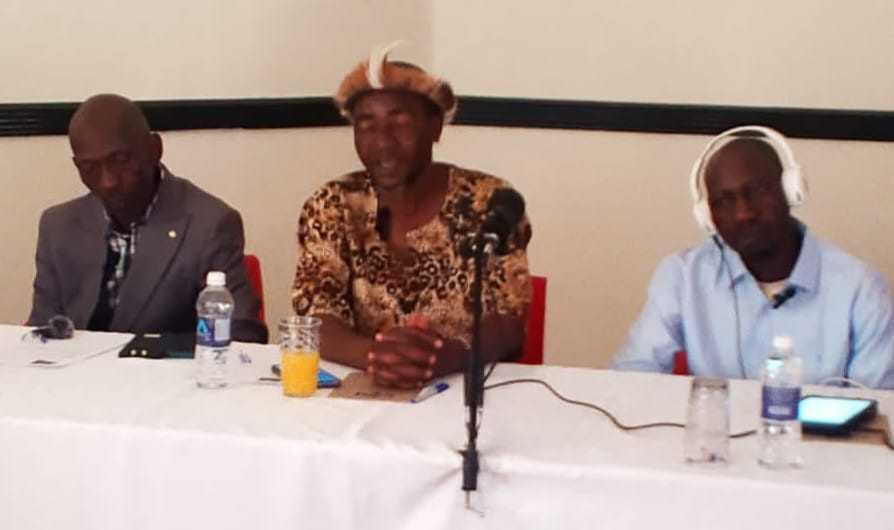
In Zimbabwe, an increasing number of development organisations and their struggle for visibility in the face of donor fatigue raises questions about the purpose and impact of the communication approaches adopted in this sector.
by Caroline Hungwe
What is apparent is a concentration of communication that focuses on the organisation’s public relations and donor visibility, with less of communication for development strategies that target the affected people with action-oriented information so that they can make informed decisions.
Resources are directed to project sites visits, social media messages, workshops, branded visibility items and associated products that characterise the public relations tools and channels to communicate critical issues, for instance child marriage, gender-based violence, climate change or food security targeting both beneficiaries and donors.
Beneficiaries are often lectured at events about such important development issues, where social and behaviour change is envisaged. Beneficiary interests seem subservient to the predetermined goals of the donor community.
Role of the Fourth Estate
Members of the Fourth Estate are afraid of ruffling feathers. It is rare to find stories by mainstream media critically analysing the value of some development projects from the perspective of target beneficiaries because most of the journalists’ field trips are interest-led and donor-funded as part of media relations communication strategies.
Some communication specialists in the development sector are confined to producing and disseminating news about which non-governmental organisation is doing what, where, why, when and how, unable to implement communication activities that contribute meaningfully to social and behaviour change.
- Chamisa under fire over US$120K donation
- Mavhunga puts DeMbare into Chibuku quarterfinals
- Pension funds bet on Cabora Bassa oilfields
- Councils defy govt fire tender directive
Keep Reading
The stories are often accompanied by social media messages, characterised by pictures of executives at projects sites conveying empathy or sympathy messages to branded beneficiaries. It is compelling, if not inevitable, to conclude that the stories are calculated to serve only fundraising objectives.
However, the scenario depicted above need not be the case as balance can easily be achieved. The donors have in-house communication personnel, whose mandate is, arguably, to portray the organisation in a positive light and highlight their impact on society.
Hence independent media and communication teams in the development sector need not duplicate efforts of donor in-house teams but should add value by focusing on communities’ development needs.
The place of public relations in development
Public relations approaches employed in the development sector, often result in beneficiaries regurgitating the organisation’s work and project benefits. But experience demonstrates that most intended beneficiaries rarely put anything into practice and others abandon development practices the moment the project ends, all because they are not convinced of the efficacy of solutions proffered.
It should be noted that the intention here is not to deny donors due recognition as funders of deserving projects and programmes that address challenges facing our communities. I remain committed to encouraging current and prospective donors to undertake more projects and to understand that donor visibility is vital for gaining the goodwill of the regulators and communities at large.
This could make it easier for the donor to provide support for more projects. It is, however, critically important that the focus of communication in the development sector should give more regard to the consideration of needs of beneficiaries.
It should be distinct from communication designed for commercial organisations whose primary purpose is a financial benefit for their shareholders.
Key influencers to communication approaches adopted
Donors and the will of executives in the implementing organisation are the critical influencers central to the development and implementation of effective communication strategies. Lack of buy-in from the key influencers results in little or no resources committed.
This leads to fragmented, ad-hoc and purposeless activities. Within the same context, it is also quite common to find an organisation implementing many projects funded by different donors, with some carrying a communication budget while others do not.
One compelling reason for this could be that at proposal conception level, the donors and the executives saw no value in communication activities because they generally lack appreciation and understanding of how communication can contribute to the success of the project objectives.
Donors need to critically analyse communication statistics demonstrating visibility against qualitative research that explains audience opinion, social and behaviour change and shifting norms.
This is critical if one is to operate from an informed position and serve the needs of the people. Similarly, project managers need to start asking beneficiaries the important questions about the value of communication activities associated with their projects.
These questions do matter because there is growing concern that communication activities that characterise donor projects have transgressed to merely visibility and fundraising activities that lack added value to the beneficiaries for sustainable development to take place.
Rethinking communication in the development sector
The United Nations Children’s Fund, one of the organisations that lead in implementing effective communication for development (C4D) strategies in its work, defines C4D as “a two-way process for sharing ideas and knowledge using a range of communication tools and approaches that empower individuals and communities to take actions to improve their lives.”
The emphasis is on participatory communication products developed taking into consideration the socio-economic, cultural, and political lived experiences of people in the development context.
C4D strategies are applied through various formats of transformative arts that include audiovisual productions, theatre performances, print and other cultural expressions, including the convergence of digital technologies.
For example, in the past films such as Consequences (1988), Neria (1990), Everyone’s Child (1996), Flame (1996) and Yellow Card (2000) that had positive impact communicating gender, health and other cross-cutting development issues, were produced through funding from traditional donors like the European Union.
As a result, such films — although produced in the context of communication for development — are also evidence of the contribution to the growth of local capacity in film-making. Over the past decade, there has not been any production comparable to these in terms of edutainment, behaviour and social change value.
Nowadays, resources in this sector are spent on video documentaries with content that show donors and implementing partners talking among themselves. With similar support, the current breed of producers such as National Arts Merit Award winners, Nick Zemura and Nakai Tsuro, can come up with exceptional content that addresses cross-cutting issues in subtle, edutainment storytelling approaches that enhances sustainable and long-term behavioural and social change.
Social media analytics clearly demonstrate that ordinary people generally like entertainment as opposed to instructional approaches. Governments, donors, and policymakers need to push for increased investment towards communication for development approach in this country as this approach serves the interest of the beneficiaries efficiently and effectively, a major goal of development partners.
l Caroline Hungwe is a media and communication for development consultant, content producer, international relations expert, entrepreneur and small-scale miner. She writes on communication in the development sector, informed by the wisdom and insight that come from professional and lived experiences. E-mail: [email protected]










